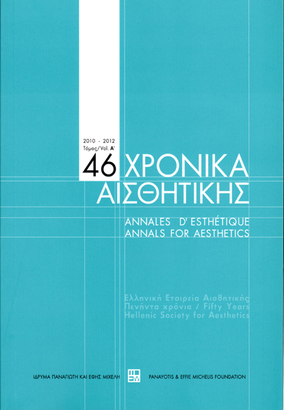Μουσικός ουμανισμός και τραγούδια με συνοδεία λαούτου στην ιταλική αναγέννηση
Part of : Χρονικά αισθητικής : ετήσιον δελτίον της Ελληνικής Εταιρείας Αισθητικής ; Vol.44, 2007, pages 77-86
Issue:
Pages:
77-86
Parallel Title:
Musical humanism and lute songs in italian renaissance
Section Title:
Β' Μέρος/Part IΙ
Author:
Abstract:
The tendency for a return to the virtues and norms of the ancient Greek and Roman world had direct impact on the Italian Renaissance musical thought. As the complex, multi-layered texture of Renaissance music impended the comprehensible delivery of the text and it was not consistent with the simplicity and the directness of the ancient Greek monody, new ways of musical expression were sought in order to achieve a distinctive delivery of the text in accordance with the musical and rhetorical models of antiquity. Despite the fact that no fundamental changes occurred in the actual musical language, the result of the tendency was the emergence of solo song on the accompaniment of an instrument, with the solo voice bearer of the meanings of the words and the passions they communicated.The preferred instrument for the accompaniment was the lute since, for Renaissance literary men, the lute often symbolized Orpheus’ lyre and also because it allowed the interpretation of polyphonic textures. Regarding the desirable return to the ancient principles, these solo lute songs had a character more symbolic rather than re-creative. However, the Renaissance symbolism served as the foundation for the important stylistic musical changes that took place with the transition to the seventeenth century.
Subject:
Subject (LC):
Keywords:
μουσική, Ιταλία, Αναγέννηση
Notes:
Το παρόν αποτελεί επεξεργασμένο τμήμα της εργασίας με τίτλο «Το όμοιον θεωρείν: Commonness and Similarity between Renaissance and Baroque Solo Song» που εκπονήθηκε στο Μουσικό Τμήμα τού Πανεπιστημίου τού York (UK) για την απονομή του τίτλου ΜΑ in Music., Περιέχει εικόνες




